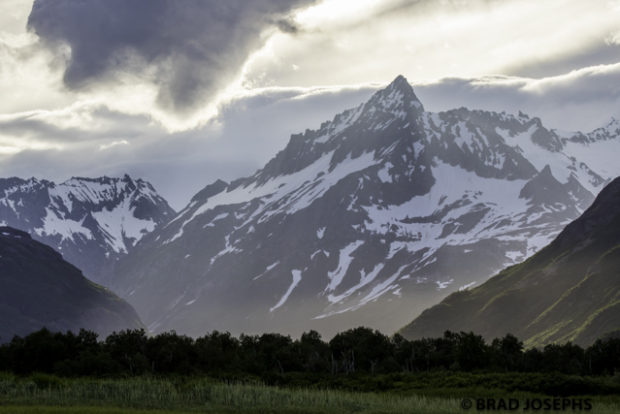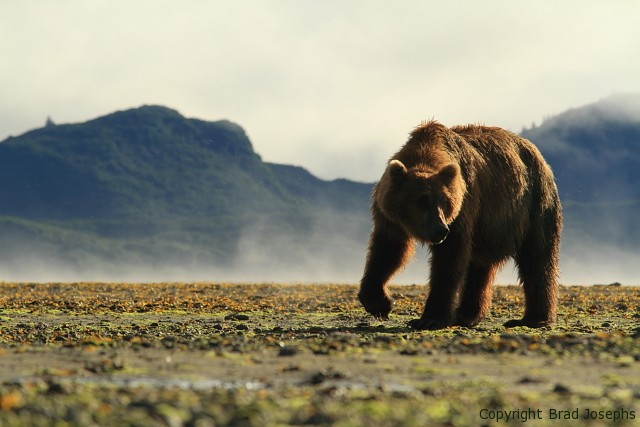Hopefully many of us have Alaska on our minds now as we battle the Pebble Mine Project, which would be one of the greatest ecological disasters in history. Opposition to the mine can stem from a variety of interests, such as the commercial and sport salmon industry and way of life, bear and other wildlife conservation, wilderness values, and tourism. As an expedition leader and naturalist guide for Natural Habitat Adventures in Katmai National Park, Alaska, I often focus my attention on arguing to protect the invaluable tourism resources that the mine would destroy, because tourism is money, and money talks to even the most conservative pro-pebble parties who do not share the appreciation of wildlife conservation that I have.
Recently a freelance writer named Katlyn Evans asked if I would share some of her thoughts on Alaska Tourism on this site, and I welcomed her. Below is some very well written food for thought on tourism in Alaska. Thank you Katlyn! Here is her story:
The Flourishing of Arctic Ecotourism Begins in Alaska
The United States Senate has just passed the largest public lands bill in a decade, which protects 2.5 million acres of land and hundreds of miles of rivers. While this is great progress, the bill lacks a mention of tourism. There’s no doubt that tourism is crucial to Alaska’s economy. But, wildlife such as the bears and wolves that call the region home are also crucial to the natural ecosystems. With more and more tourists and even professionals beginning to question the ethics of not only traveling to places like Alaska but engaging closely with the wildlife through activities such as photography and cruising, ecotourism is being closely analyzed.
Natives’ Control Over Land
In Alaska, there is a high level of control of the local land. Indigenous communities actually own and protect certain areas, and this has led to widespread respect and care in crafting a healthy ecotourism industry. This is what makes Alaska the ideal spot for ecotourism to flourish. Because the region has given the power to indigenous people and their right to protect their land and the wildlife that live on it, the local residents and the tourists that stay in Alaska, have been able to understand and follow rules laid out by those who know best. This marriage of economic growth and conservation is a model that all other arctic areas can follow when looking to bridge the gap between native lands, endangered animals, and the people who want to come to visit them and learn more about the culture.
Examples of Tourism Regulations to Follow
In order to implement certain regulations and standards regarding the enhancement of Arctic tourism, it’s important for other areas to follow what Alaska has done already. For example, tourists that arrive in the region understand that property rights truly are sacred and not to take them lightly. As another example, trophy hunting is taken very seriously in Alaska as many people in the region rely on it for food and income. This means that tourists visiting Alaska are made aware of their impact when hunting, not only in regards to what kind of wildlife they are allowed to hunt but that doing so might impede on the available resources to natives. Alaska is a resource economy, like many other countries in the Arctic. This means that, if tourists are going to enter the area and consume resources, industries such as ecotourism are responsible for regulating those changes while ensuring that there is a balance between economic development and nature conservation.
Preserving the Nature of Tourism
Nature and tourism go hand in hand in the North and finding a way to allow both to flourish within their natural environments are what allows Alaska to serve as a model to other similar areas looking to protect resources while inviting others to learn about their culture. Wildlife, natural ecosystems, and humans are able to live together in harmony, and Alaska is demonstrating just how easy it is to regulate different types of ecotourism to ensure that everybody involved can benefit without losing balance.
Freelance writer, Katlyn Evans katlyn.eriksen@eagremail.com






No Comments